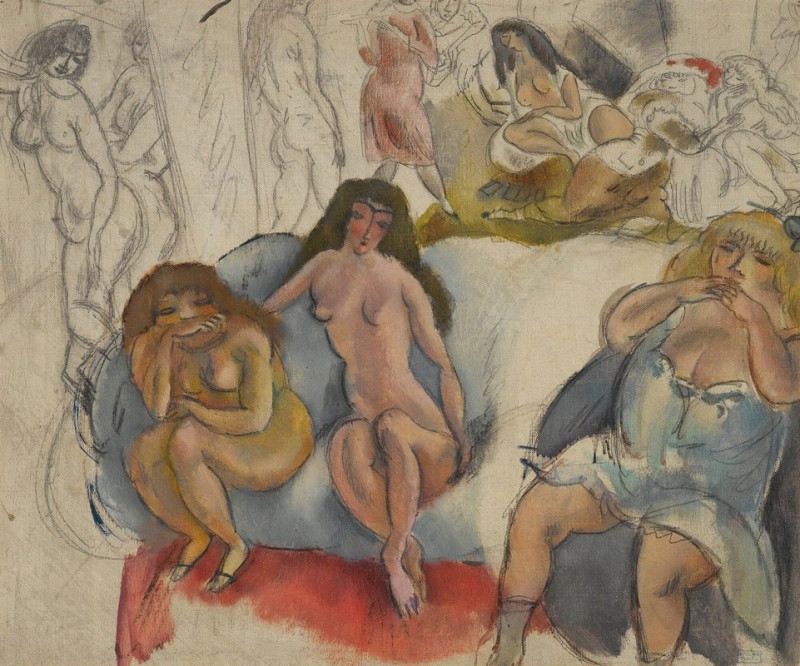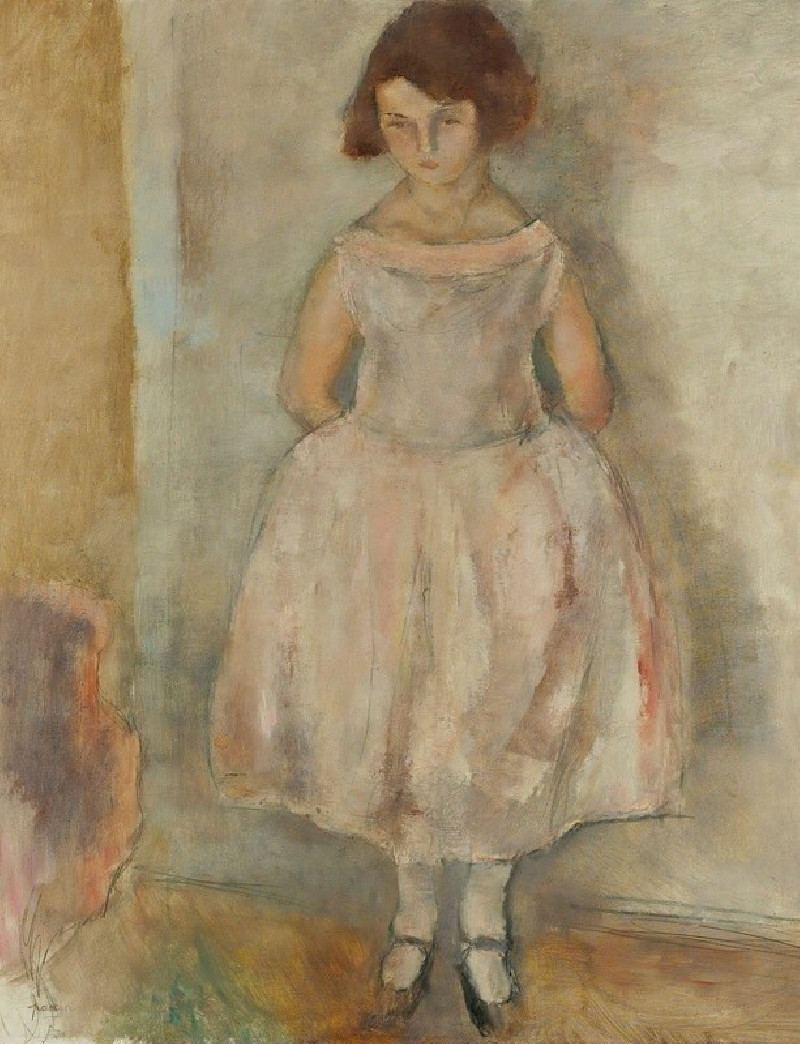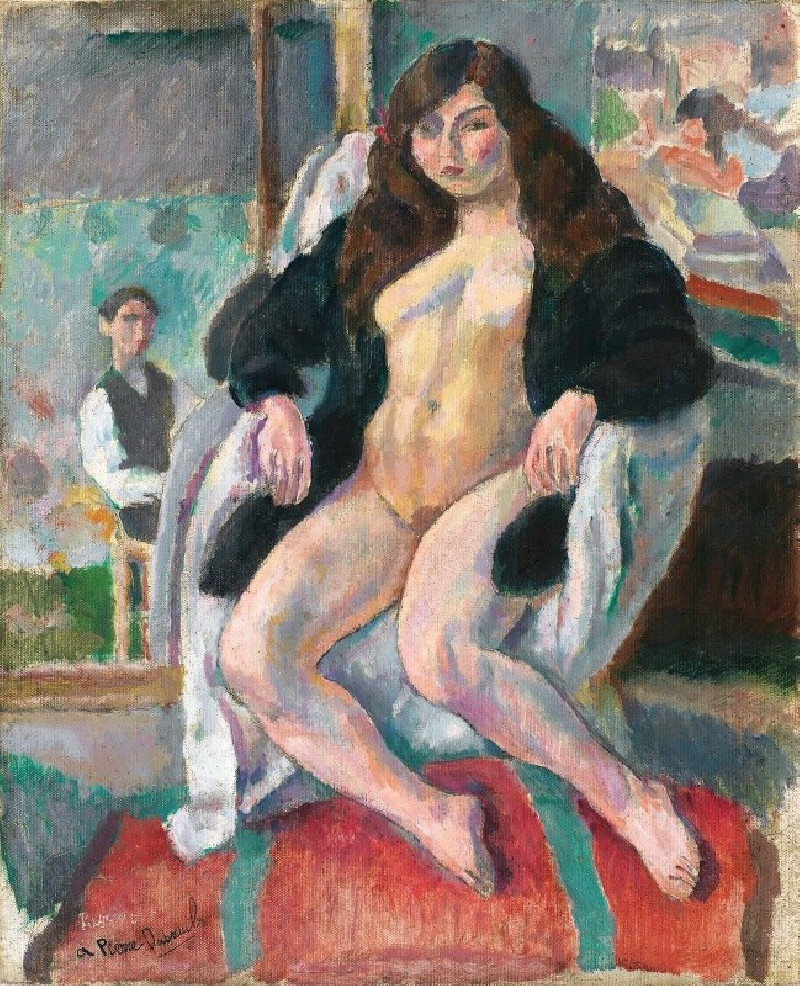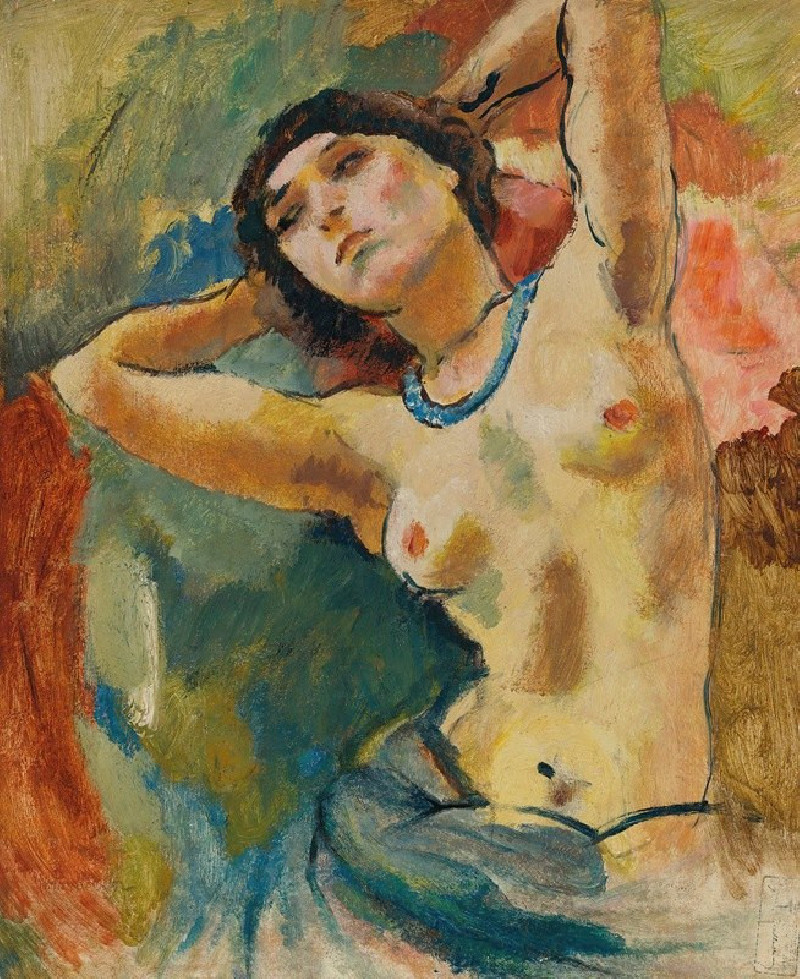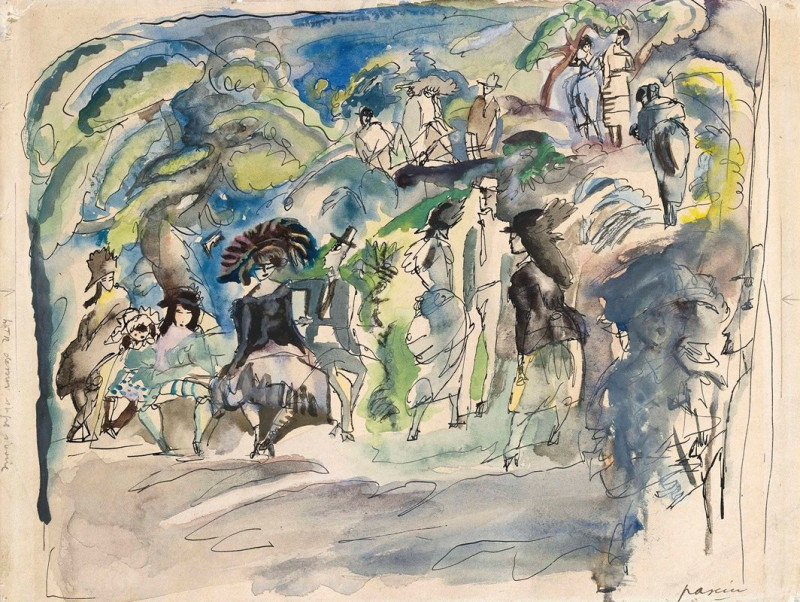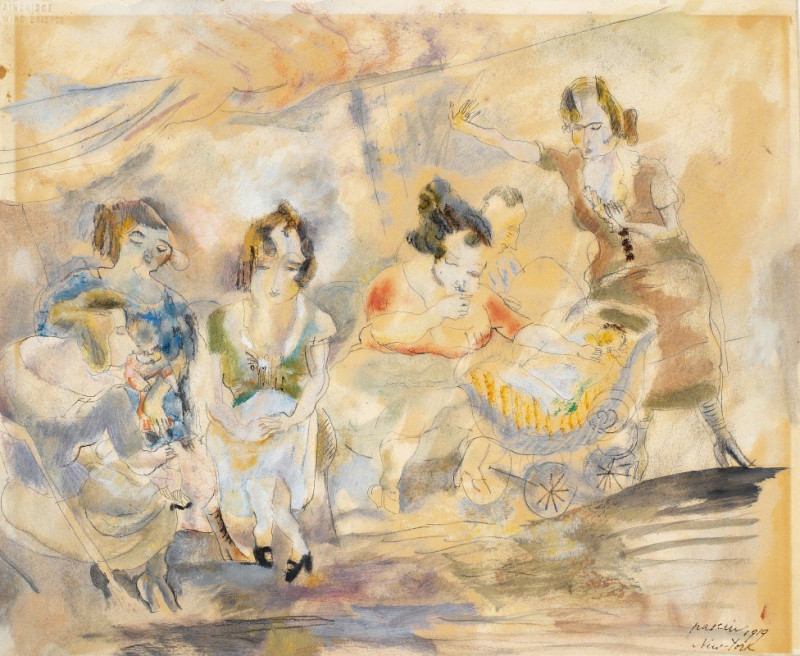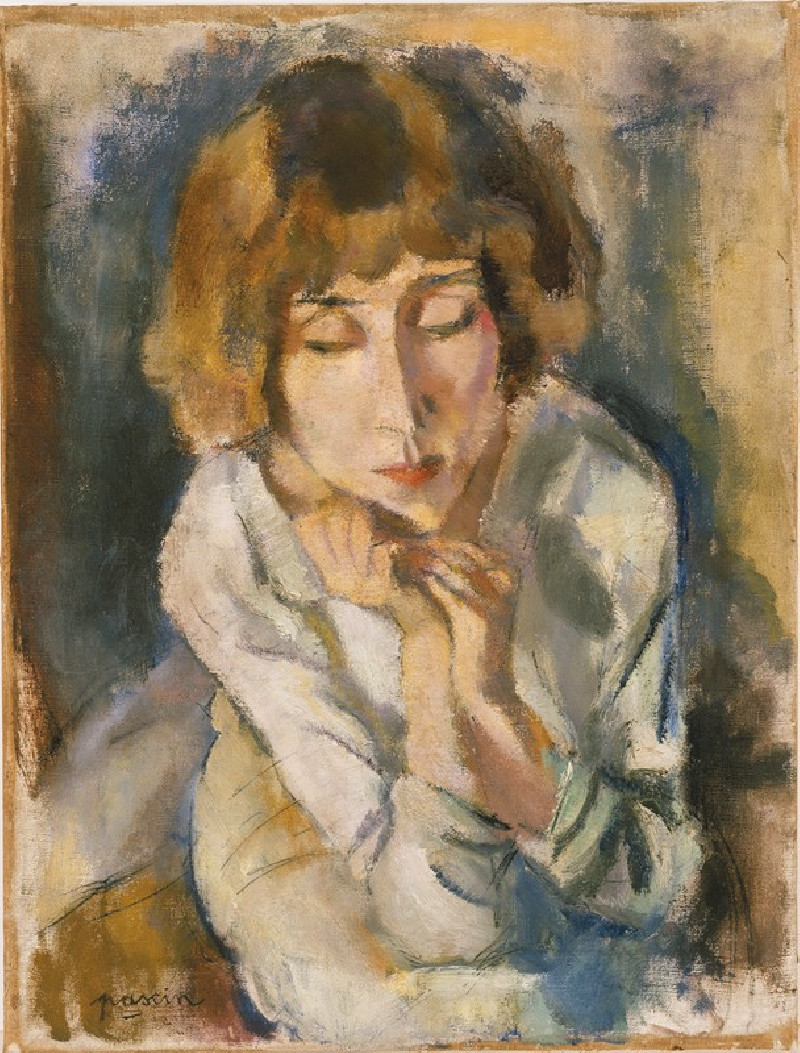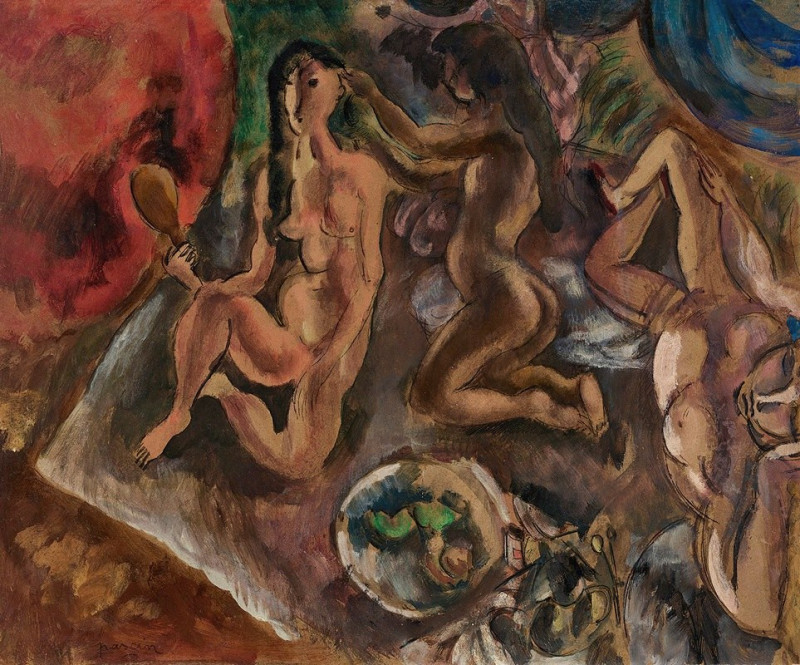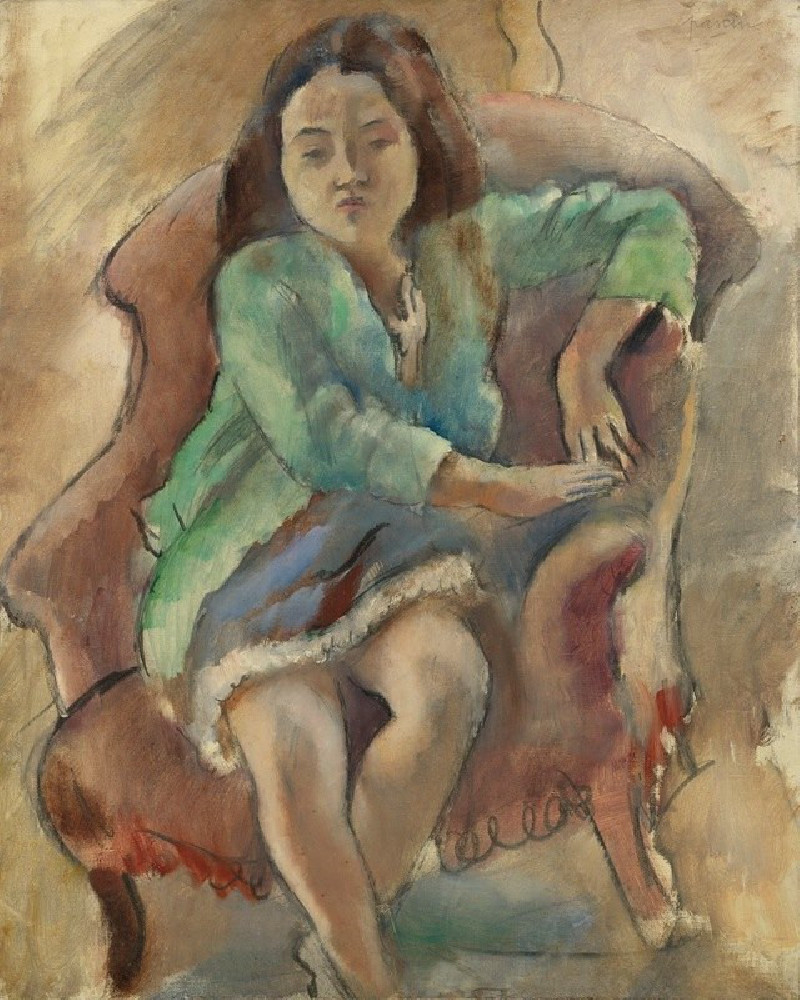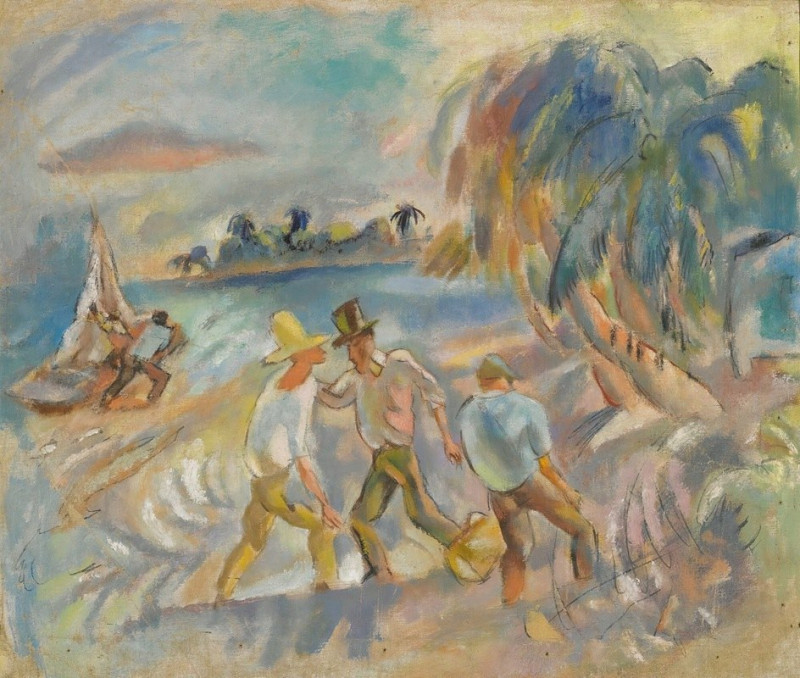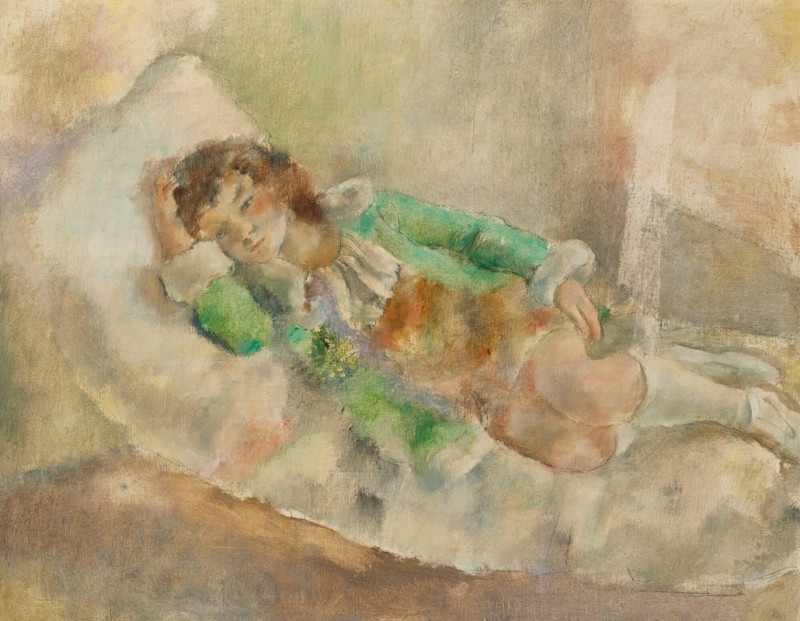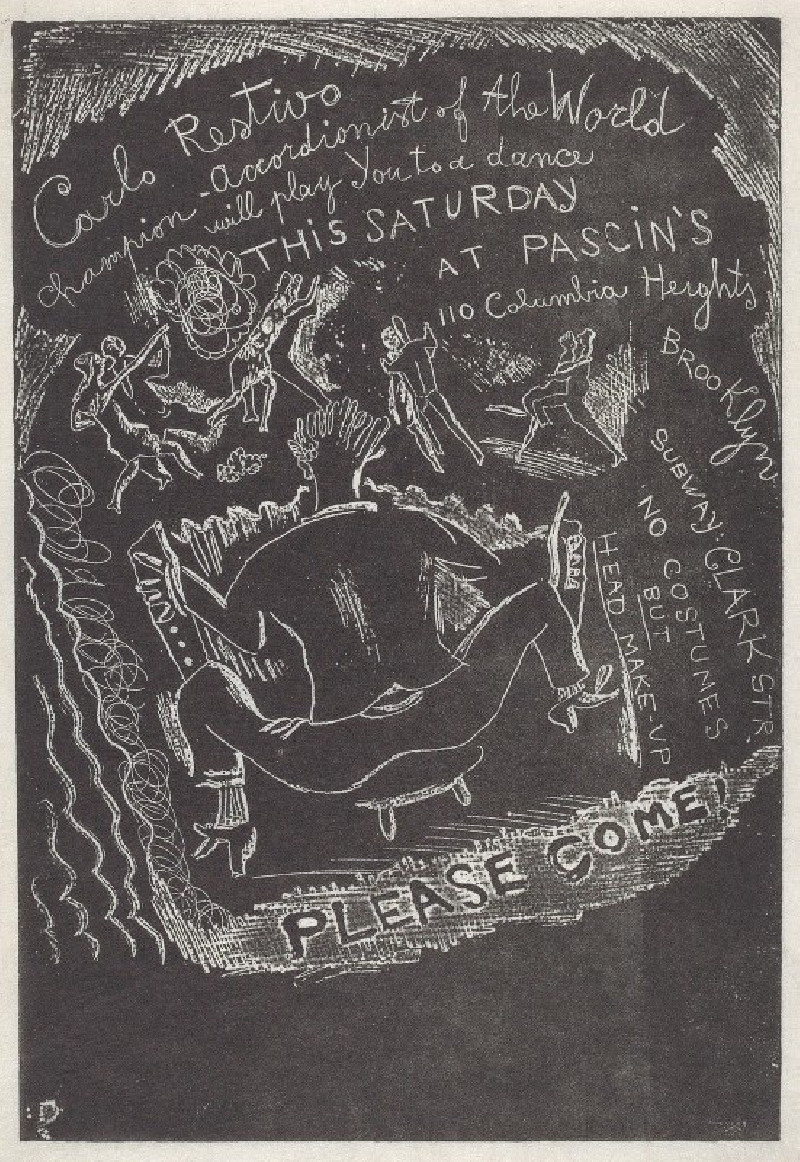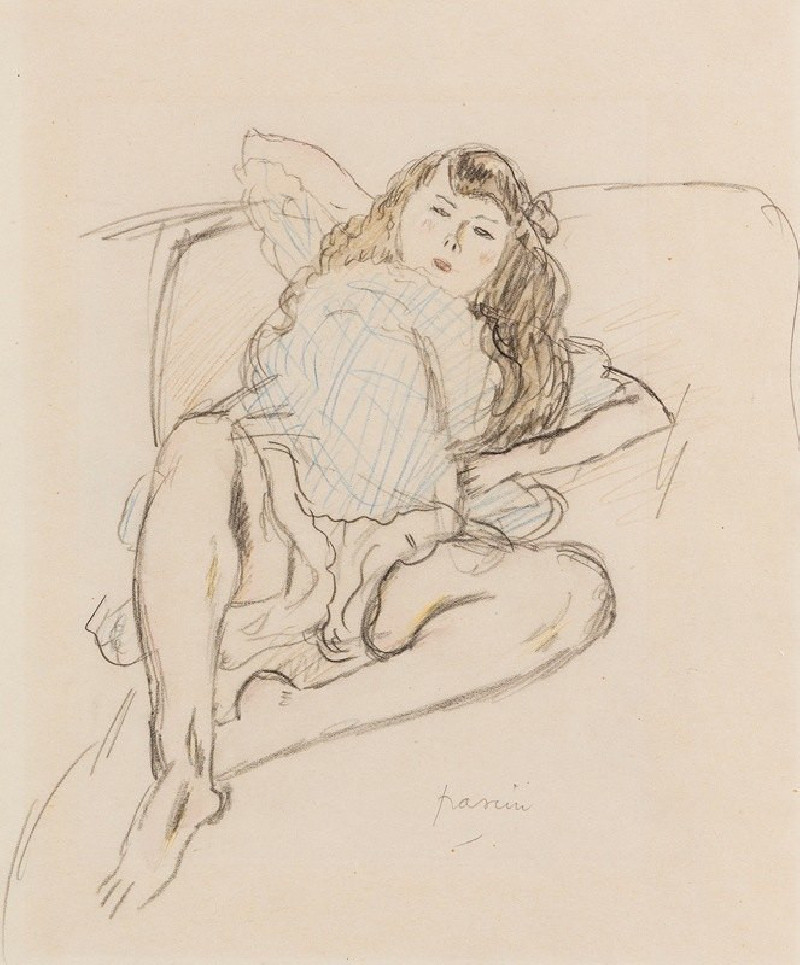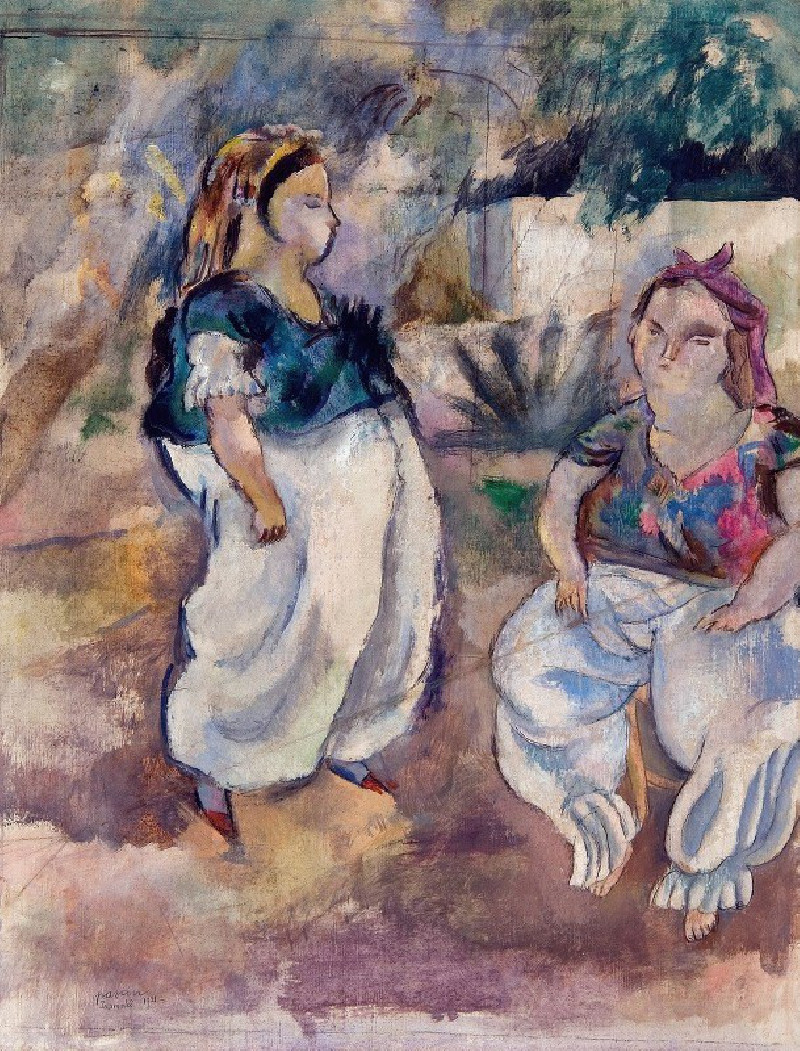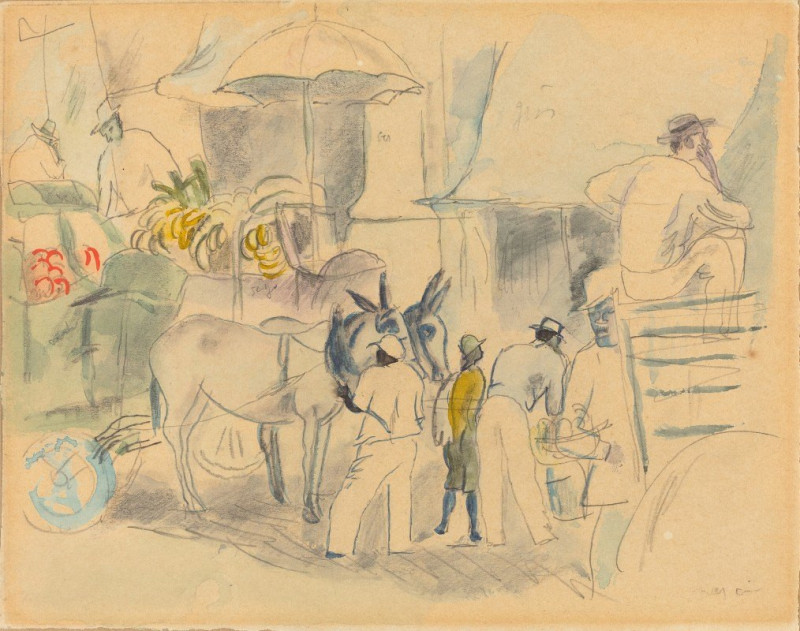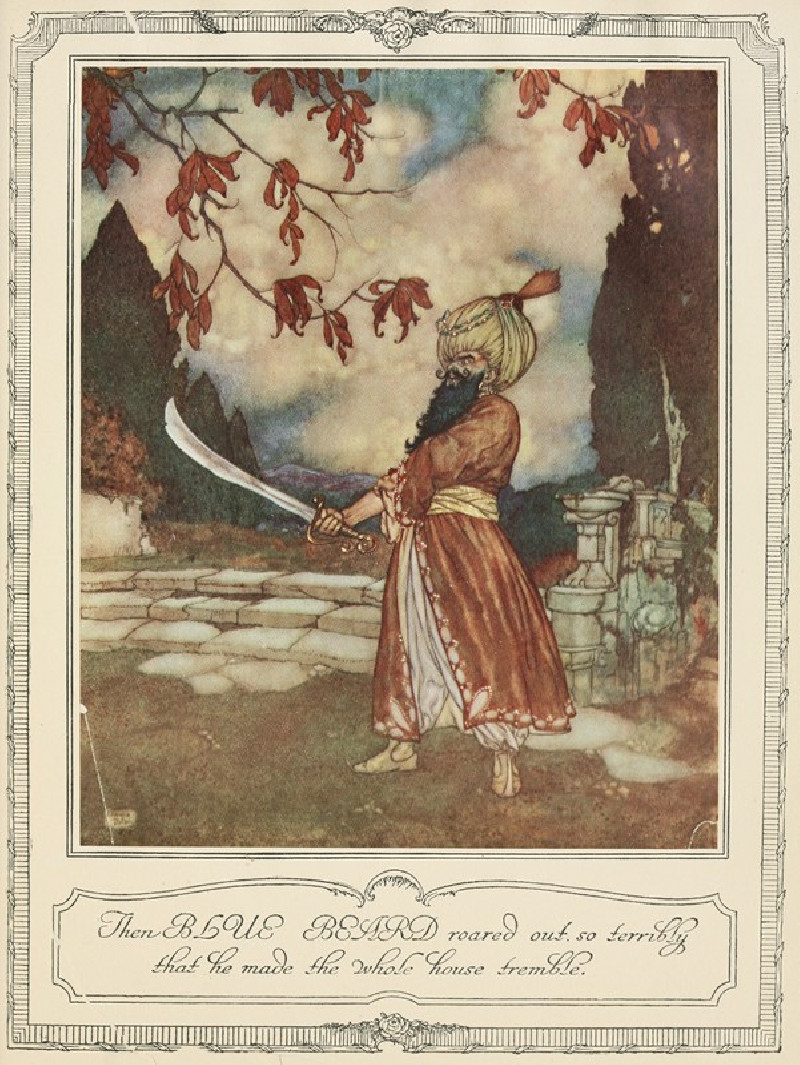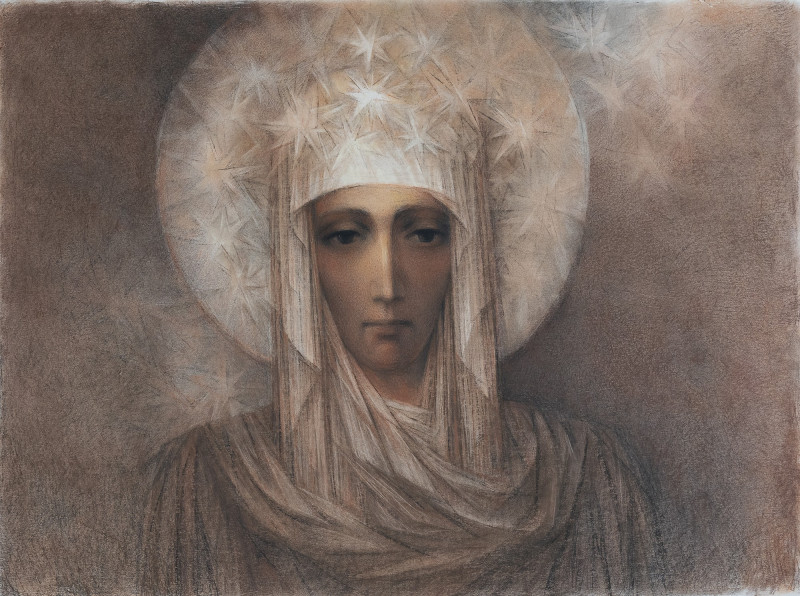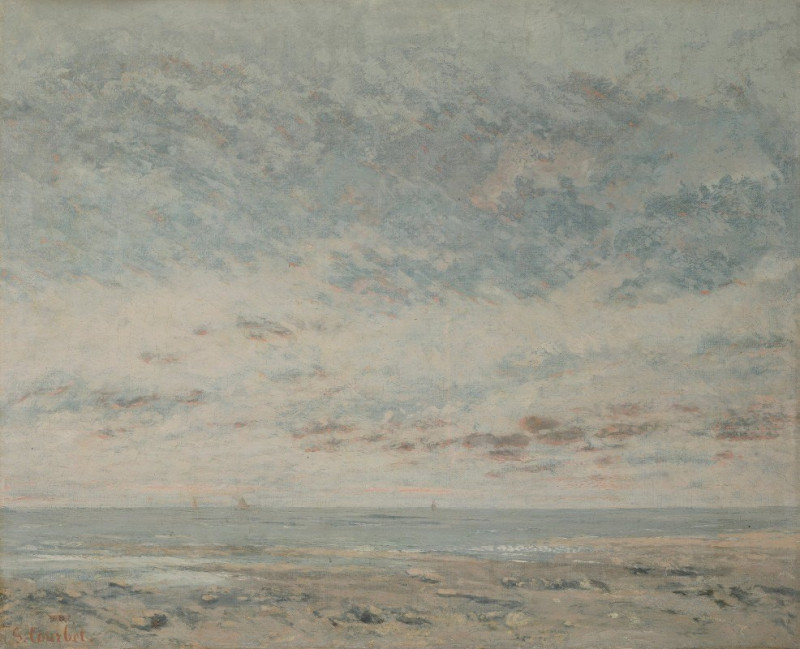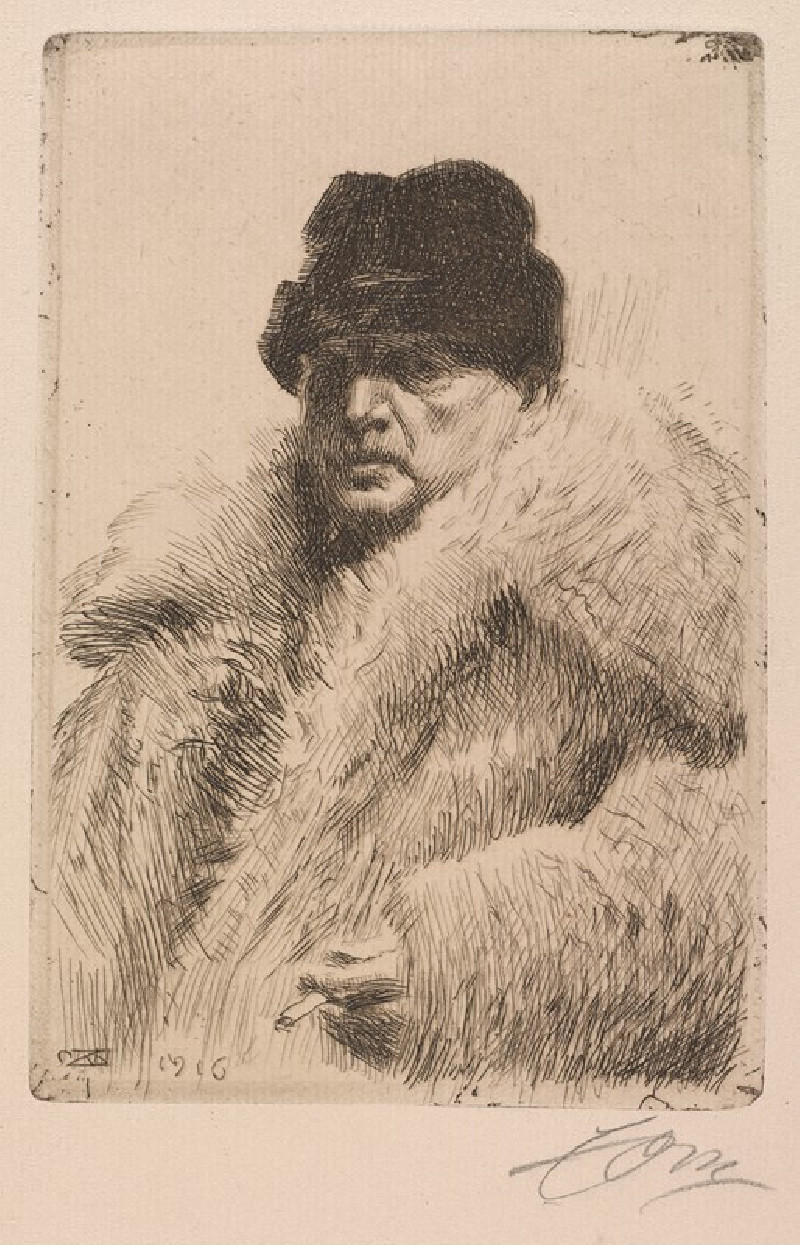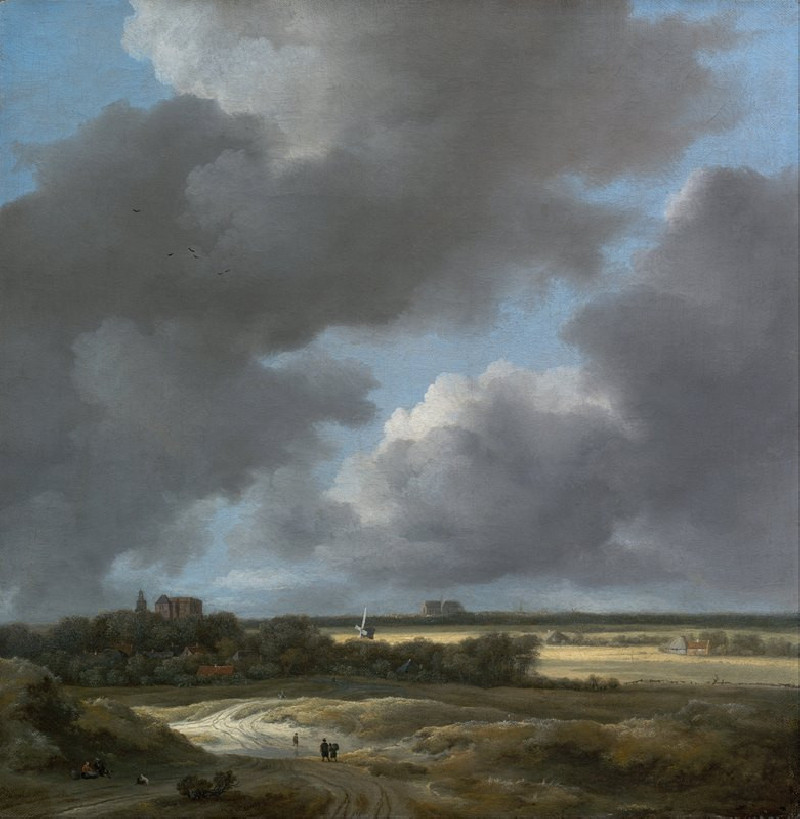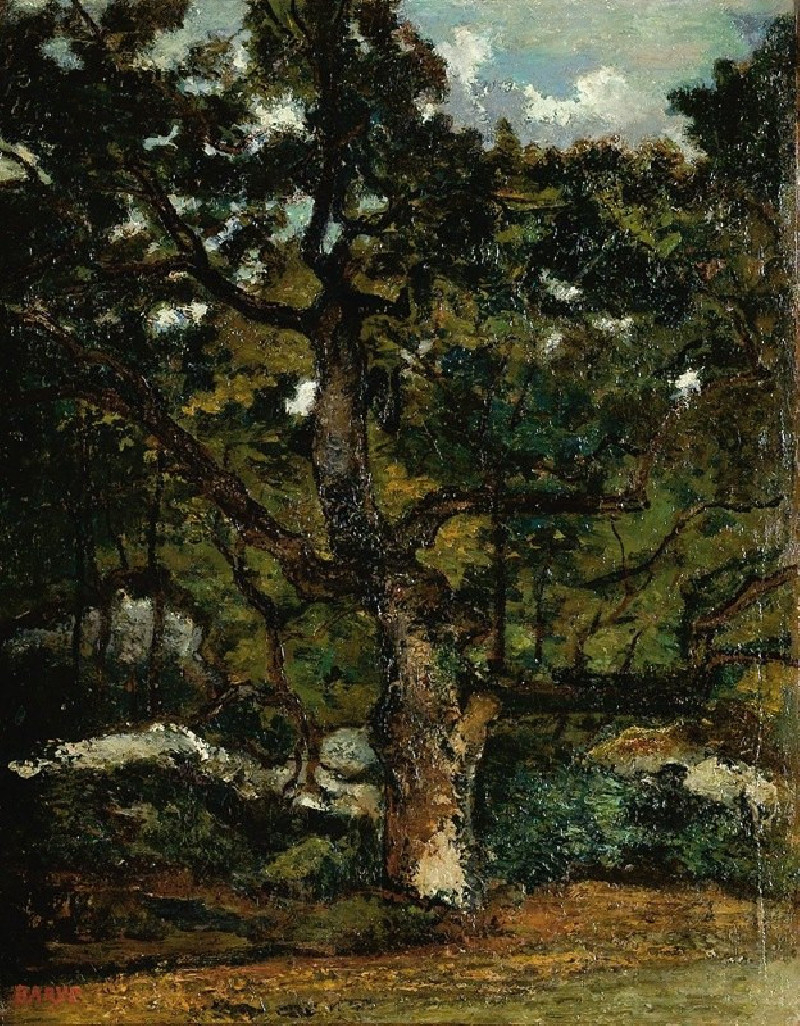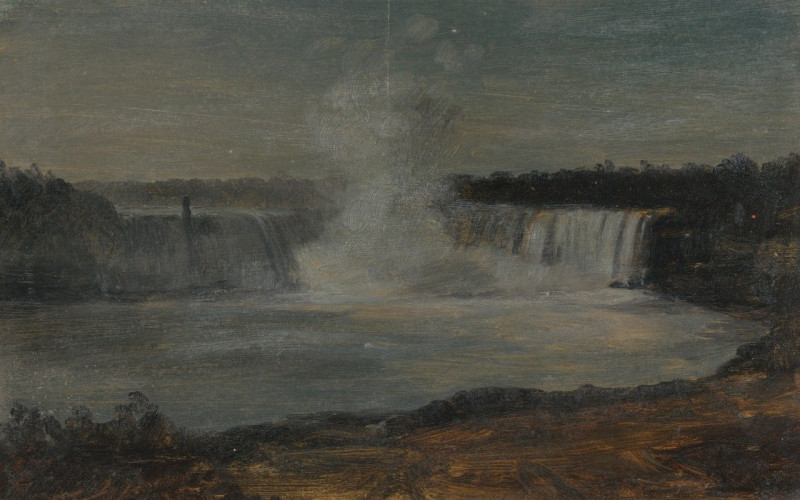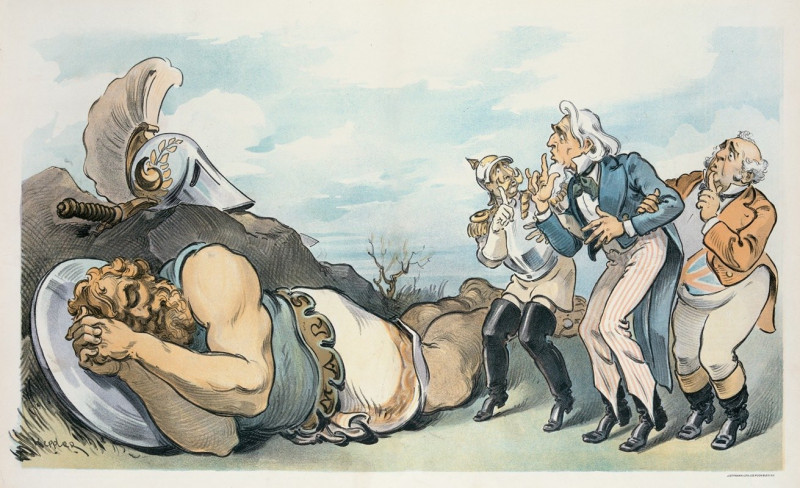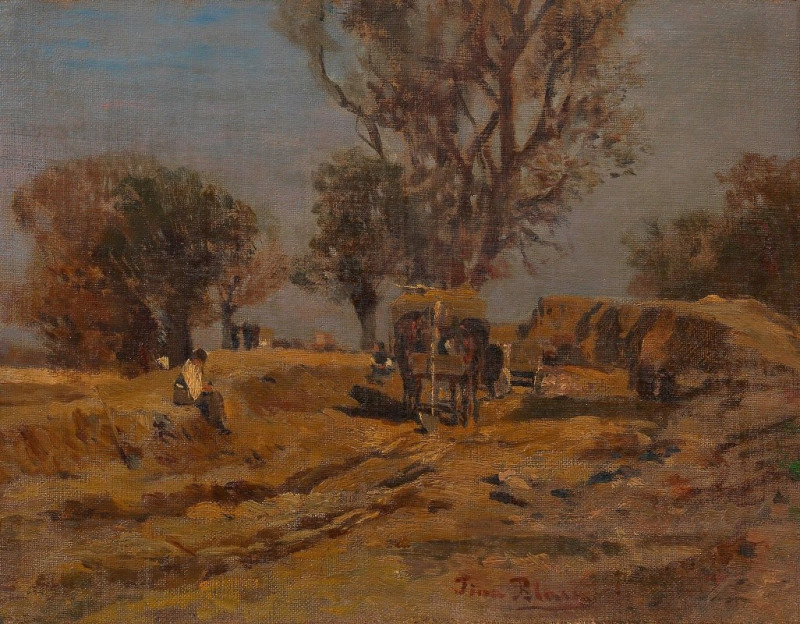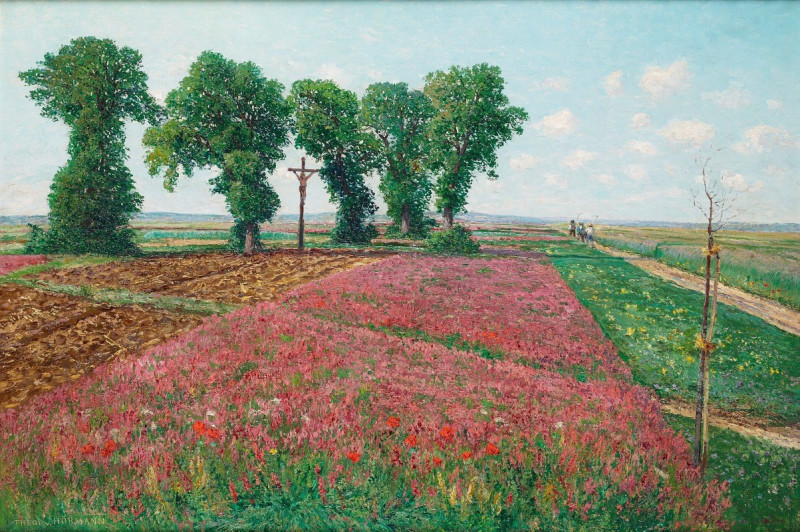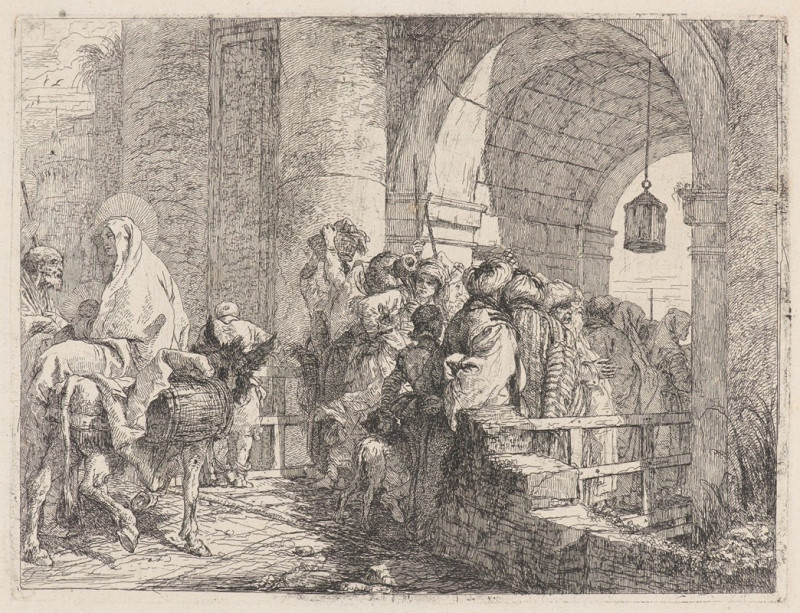Femmes Galantes (circa 1911)
Technique: Giclée quality print
Recommended by our customers
More about this artwork
"Femmes Galantes," a captivating creation by the Bulgarian-born artist Jules Pascin, painted around 1911, illustrates his unique approach to capturing female forms in an evocative yet whimsical manner. Known for his delicate, often sketch-like paintings, Pascin's work here is a vivid exploration of femininity and sensuality, featuring an assembly of women depicted in various poses and states of undress.The painting is enlivened through a blend of roughly drawn lines and washed-out patches of color, imbuing the canvas with a sense of both spontaneity and depth. The composition showcases several figures; some are sketched in minimalistic strokes, while others are more fully rendered with subtle hints of color enhancing their form. The figures appear comfortable and unposed, suggesting a snapshot of private moments, perhaps behind the scenes of a cabaret or boudoir, places Pascin was known to frequent for inspiration.Pascin's choice of a muted color palette, primarily earth tones and pastels, harmonizes with the informal and intimate vibe of the scene. The artwork provides a glimpse into the bohemian lifestyle associated with the early 20th century Parisian avant-garde, of which Pascin was a notable member. The relaxed postures and expressions of the women convey a narrative of ease and familiarity, inviting viewers to contemplate the lives and stories that Pascin sought to encapsulate through his distinctive artistic language."Femmes Galantes" embodies Pascin's enduring fascination with the female form, his skill in capturing the essence of his subjects, and his contribution to the modernist movement.
Delivery
Returns
Nudes, street scenes and landscapes of women and tropical locations by Bulgarian-born American painter Jules Pascin (1885-1930). Born to an affluent family, Pascin was educated in Austria and Germany before moving to Paris in 1905. It was there that he became associated with the Modernist movement. He attached himself to the human condition and was known for painting portraits of nude and half-dressed women. He stands in the grand tradition of the romantic, bohemian artist.

